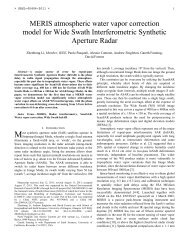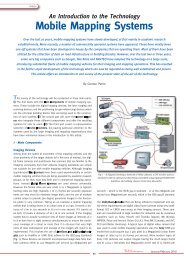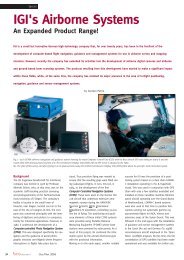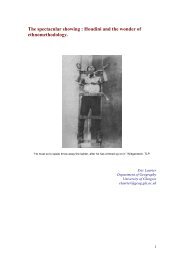Café Ethnography : the uses of tables and chairs
Café Ethnography : the uses of tables and chairs
Café Ethnography : the uses of tables and chairs
You also want an ePaper? Increase the reach of your titles
YUMPU automatically turns print PDFs into web optimized ePapers that Google loves.
<strong>Café</strong> <strong>Ethnography</strong>:<br />
In Nine Wakeford's (1999) ethnography <strong>of</strong> a cybercafe she draws on Crang's work to<br />
examine how a 'l<strong>and</strong>scape <strong>of</strong> computing' (p180) is produced by <strong>the</strong> staff <strong>and</strong><br />
customers in a 'real' place. She notes how carefully <strong>the</strong> cafés décor was arranged to<br />
produce a sense <strong>of</strong> its 'cyber' ness - with <strong>the</strong> use <strong>of</strong> certain colours <strong>and</strong> horizontal<br />
surfaces in matt silver metal. And as she puts it toward <strong>the</strong> end <strong>of</strong> her article:<br />
'Bodies-in-movement produce <strong>and</strong> incorporate accounts <strong>of</strong> <strong>the</strong>ir journeys as <strong>the</strong>y encounter<br />
durable materials <strong>and</strong> discourses in <strong>the</strong> l<strong>and</strong>scape <strong>of</strong> translation. Customers walked around<br />
<strong>the</strong> café floor interacting with both machines <strong>and</strong> cyberhosts (part <strong>of</strong> <strong>the</strong> café staff),<br />
consuming machines <strong>and</strong> food, experiencing <strong>the</strong> décor <strong>and</strong> music <strong>and</strong> hearing <strong>the</strong> history <strong>of</strong><br />
Net<strong>Café</strong>.'<br />
Her account is unusual in <strong>the</strong> cyberspaces literature in its lack <strong>of</strong> hyperbole about<br />
technology <strong>and</strong> its willingness to see <strong>the</strong> routines grounds for doing computing in a<br />
café. As <strong>the</strong> quote suggests Wakeford also has a sense <strong>of</strong> <strong>the</strong> café not as a static maplike<br />
space which contains <strong>the</strong> rules for its use in various material artefacts <strong>and</strong> texts<br />
but ra<strong>the</strong>r as a place in which actions unfold sequentially combining, translating <strong>and</strong><br />
dis-connecting <strong>the</strong> human <strong>and</strong> non-human parts <strong>of</strong> <strong>the</strong> cybercafe.<br />
Cafes: <strong>the</strong> Missing What or Where <strong>the</strong> Action is.<br />
All too <strong>of</strong>ten social <strong>and</strong> cultural studies <strong>of</strong> public space <strong>and</strong> community ga<strong>the</strong>ring<br />
places pass over <strong>the</strong> 'just thisness' or 'what' <strong>of</strong> our activities in favour <strong>of</strong> relating <strong>the</strong>se<br />
'various extant social practices back to a context-free "core" <strong>of</strong> rules, norms <strong>and</strong> o<strong>the</strong>r<br />
social structures' (page 272)(Lynch 1993). Drawing on an example given by<br />
Garfinkel <strong>of</strong> <strong>the</strong> status relations between jazz musicians as a classic sociological case<br />
<strong>of</strong> 'missing <strong>the</strong> what' <strong>of</strong> playing jazz, Lynch re-announces ethnomethodology's<br />
policies <strong>of</strong> describing just what such activities as playing jazz are. 4 In terms <strong>of</strong> <strong>the</strong><br />
study <strong>of</strong> public places (Watson 1993) puts it thus:<br />
'What … I am recommending is a new sociology <strong>of</strong> knowledge which does not seek to<br />
operate from 'on high', imputing overarching perspectives to groups, or societies 'as wholes',<br />
as <strong>the</strong> Karls Marx <strong>and</strong> Mannheim (plus countless o<strong>the</strong>rs) have done, but a sociology <strong>of</strong><br />
knowledge which addresses peoples' practices, <strong>the</strong>ir typifications / categorisations in action,<br />
<strong>the</strong>ir activities <strong>and</strong> interactions, <strong>the</strong>ir communicative interactions conceived in <strong>the</strong> broadest<br />
sense'. (page 23)<br />
It is no surprise <strong>the</strong>n that we are indifferent to Habermas' overarching <strong>the</strong>ory <strong>of</strong> <strong>the</strong><br />
public sphere even though we still wish to consider <strong>the</strong> ordinary conceptions about<br />
cafes it exploits to build its topic (confusing natural language's resources with its own<br />
(Garfinkel <strong>and</strong> Sacks 1970) p337). Our concern is with <strong>the</strong> 'ground floor' (Lee <strong>and</strong><br />
Watson 1993) underst<strong>and</strong>ing <strong>of</strong> cafés that is available <strong>and</strong> accomplished by <strong>the</strong> people<br />
<strong>and</strong> things that inhabit those c<strong>of</strong>fee-scented settings. 5 A located knowledge <strong>of</strong> <strong>the</strong> kind<br />
which we can find in Crang <strong>and</strong> Wakeford's ethnographies.<br />
4 An exemplary ethnomethodological study <strong>of</strong> learning to play jazz piano being (Sudnow 1978)<br />
5 For an evocative narration <strong>of</strong> this movement from panoptic views from above to street level see<br />
chapter 7 <strong>of</strong> (De Certeau 1984), though De Certeau's move ultimately ends up with a lyrical <strong>the</strong>orising<br />
<strong>of</strong> which steals walking away again from its actuality for walkers (for an on <strong>the</strong> ground <strong>and</strong> less poetic<br />
treatment - (Livingston 1987))<br />
6
















